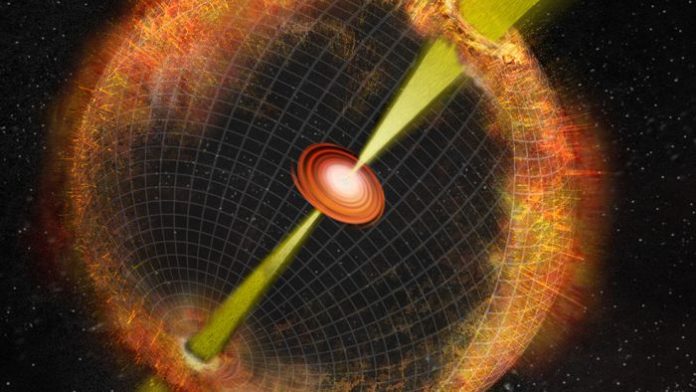The universe is full of fascinating stories, and NASA’s Fermi Gamma-ray Space Telescope has just spotted a doozy. About 10,000 years ago a star went supernova, and the explosion managed to shoot the resulting pulsar off like a cannonball, with enough force to send it hurtling out of the galaxy altogether.
When massive stars explode, they throw off their outer layers as a supernova and leave behind an extremely dense core called a neutron star. Pulsars are a class of these that spin rapidly and are very visible to telescopes as regular pulses of electromagnetic signals – hence the name.
The pulsar in question is known as PSR J0002+6216 (or J0002 for short). It was discovered in 2017 as part of a citizen science project known as Einstein@Home, which has people trawling through Fermi data to find objects of interest. J0002 was spotted about 6,500 light-years away in the constellation Cassiopeia, and it spins 8.7 times per second.
But the thing that really stands out about this pulsar is its speed: J0002 was found to be racing through the cosmos at almost 2.5 million mph (4 million km/h) – faster than 99 percent of other pulsars with recorded speeds. And as it turns out, that’s fast enough to eventually escape the Milky Way entirely.
But how did this pulsar manage to clock such insane speeds? Luckily it left a smoking gun, in the form of a 13-light-year-long tail of magnetic energy, which points directly back to the center of a nearby supernova remnant known as CTB 1.
“Thanks to its narrow dart-like tail and a fortuitous viewing angle, we can trace this pulsar straight back to its birthplace,” says Frank Schinzel, co-author of the study. “Further study of this object will help us better understand how these explosions are able to ‘kick’ neutron stars to such high speed.”
The astronomers still aren’t quite sure how J0002 got away from the supernova remnant that birthed it, but the story they’ve suggested is a dramatic one. The supernova occurred about 10,000 years ago, creating the cloud with the pulsar at its center. At first, the expanding cloud of debris would have moved faster than the pulsar, but over thousands of years the drag of interstellar gas would have slowed it down.
About 5,000 years ago, J0002 would have finally left the cloud and ventured out on its own. Exactly how it reached those speeds isn’t known, but the astronomers suggest that clumps of denser, slower-moving matter might have played gravitational havoc on the pulsar, firing it off like the runaway cannonball we see today.
Further studies of J0002 and CTB 1 could help shed light on the process.













